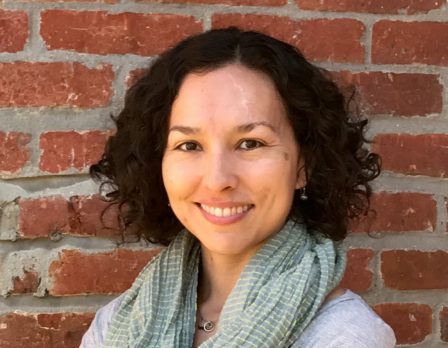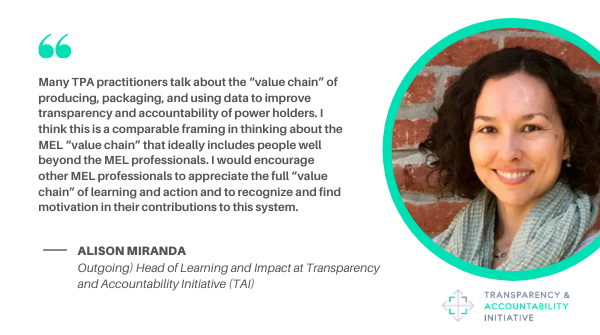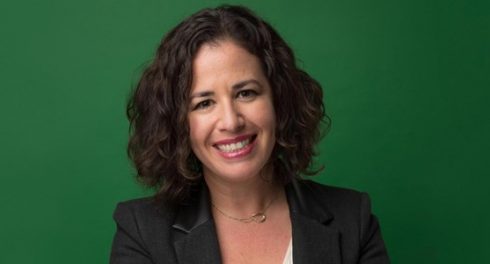
Ever wondered what it is like to work in a donor collaborative or to try and bridge the world between funders and grantees? Wonder no more! We sat with Alison Miranda, our (outgoing) Head of Learning and Impact. We spoke about her experience of leading learning strategy and monitoring, evaluation, and learning (MEL) practice at TAI, some of the unique elements of learning in a collaborative setting, and what happens when learning leads us in a surprising direction. We are sure that Alison will bring these insights to bear in her exciting new role at the Fund for Global Human Rights.
- What was your first job and what motivated you to start working in the TPA (transparency, participation, and accountability) field?
My work on TPA issues started with a general interest in global civic participation and the nonprofit sector in graduate school. Little did I know that my first job would last nearly a decade and take me to more than a dozen countries!
I started with the National Democratic Institute, a global nonprofit and nonpartisan organization that works to strengthen democratic institutions and processes. Thematically, the programming drew me in from the beginning – covering national nonpartisan election observation efforts, youth and women’s political participation, and more. And I was motivated by the work and experiences of the people I encountered. This started with my field-based colleagues, who had deep civic and political experience and knowledge and most of whom were from the country or region where they worked. I also had the privilege of meeting and supporting leaders of non-violent democratic change and reform that we aimed to support globally. I had DC and field-based positions supporting and leading democracy programming in Latin America. I provided technical assistance from a MEL perspective for democracy and governance programs.
- What was it like for you working in a donor collaborative like TAI? Was it in any way different from your previous roles?
TAI is not like any previous job I’ve ever had! There are certainly some similarities to my past work, but there are a few key differences.
- The Secretariat sits in a unique space between funders and practitioners.
I think it took me at least six months on the job to fully understand this position. And it is a recurring conversation among the Secretariat as we bring on new Atlas Corps Fellows or consider our comparative advantage on a particular issue. This “in-betweenness” offers value to our members and other partners with whom we work and collaborate. I think it forces us to consider diverse perspectives. And we can hold space for conversations that might not happen otherwise.
- TAI does not have a funder-mandated or other blueprint for learning or monitoring our progress.
TAI has a clear mandate to implement MEL practices, and our members are all motivated to pursue ambitious outcomes. But our members have unique MEL approaches and grantee partner guidance; none have required, standard indicators. The Secretariat worked with our funders to align their practices and define our collective MEL Plan.
- Networked or collaborative learning and action often defies project thinking.
We do have an annual workplan, and we work to start all initiatives with purpose and bring them to timely conclusions. But the benefits and accomplishments of inter-organization collaboration emerge through repeated interactions, often after a project has concluded, or even across initiatives.

- What challenges did you face and what made your role as the head of impact and learning easier?
One challenge I faced was not having experience as a grant maker myself. My experience as a grant seeker was a helpful point of reference in this regard. This was certainly the case in working with members to produce the Smarter Grantmaking for Grantees guide, for example. But the overall commitment to learning by TAI and its funder members made this and other challenges manageable.
TAI’s funder members are all dedicated to being curious, pursuing systematic assessment, and conducting regular reflection in their respective institutions. TAI’s most recent and current strategies feature learning both as a function and an outcome of the Secretariat’s work. We dedicate staffing and other resources explicitly to our learning efforts. And finally, we continue to find ways to apply our experience and other evidence to inform future actions.
This commitment can be put to the test when learning leads us in a surprising direction. This was the case with TAI’s most recent evaluation. TAI flexed its learning muscles in using our 2019 evaluation experience to make changes far beyond those anticipated, including a new strategic framework and theory of change. Having this evidence informed our collective, and unexpected, path forward.
- Looking back, what will you recall about working at TAI? And looking forward, what are you most excited for in your new role?
My fondest memories are around the people with whom I work – from exploring new topics, as when I co-authored Story Behind the Story or participated in a practitioner Learning Collaborative, to sharing delicious meals, to witnessing colleagues experience snow for the first time. Looking ahead, I’m excited to challenge myself to form new learning habits, and to start a new learning journey with inspiring people.
- What’s your favorite thing about MEL (working on MEL/MEL practice)?
I am more of an introvert, so active listening is a very natural mode for me, personally, and a key MEL tool. I also love the cross-organizational connections that MEL work can foster among teams and people across organizational functions.
- You will be joining Fund for Global Human Rights as Director for Learning and Assessment. Going forward, what lessons are you taking from your previous role(s)?
Many TPA practitioners talk about the “value chain” of producing, packaging, and using data to improve transparency and accountability of power holders. I think this is a comparable framing in thinking about the MEL “value chain” that ideally includes people well beyond the MEL professionals. I would encourage other MEL professionals to appreciate the full “value chain” of learning and action and to recognize and find motivation in their contributions to this system.
- Dante the dog (Alison’s pet) is a guest in some of our meetings and at the Open Gov Hub, if you were to ask Dante any question; what would it be?
Washington, D.C. is full of beautiful Spring flowers now, and Dante is very deliberate in sniffing everything on our walks. I would ask: does Spring smell different than other seasons?
Thank you Alison and best of luck in your next adventure! 😊


